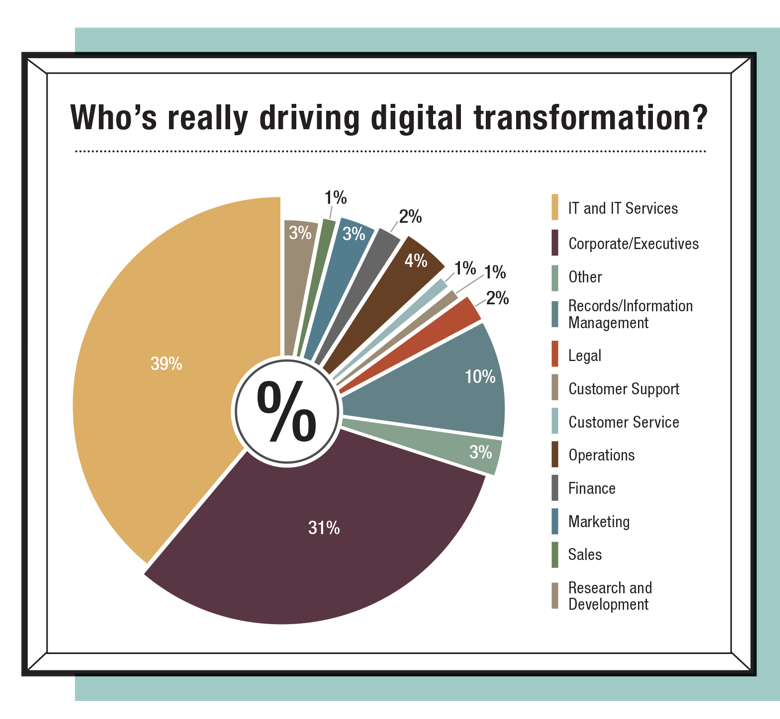This article appears in the Spring 2017 digital issue of DOCUMENT Strategy. Subscribe.

Image by: Wavebreakmedia Ltd, ©2017 Getty Images
We hear a lot these days about the “digital transformation” of business processes and the need to eliminate paper, to automate as much as possible, and to focus on business insight and customer engagement. While we know that there are technologies and services out there to help make this transition, the question is, “Who’s really driving these initiatives?”
It may be instinctive to say that information technology (IT) drives digital transformation, and according to the AIIM Industry Watch report titled “2017 State of Information Management: Are Businesses Digitally Transforming or Stuck in Neutral?” 39% of respondents did, in fact, indicate that IT and IT services push for digital transformation. However, 31% of respondents report that corporate executives are driving it.

©2017 AIIM
We also find that 53% of those surveyed are more forward-thinking with a “trailblazer” mindset—a focus on improved information sharing and collaboration—with an additional 22% citing enhanced innovation capabilities as one of their top two drivers. On the other hand, 55% of the respondents appear to take a much more “average” focus, which is on par with their peers, with traditional cost-cutting and productivity acting as main drivers.
There is still a substantial amount of chaos within these organizations regarding how multi-channel inbound information is governed and managed, indicating these organizations are likely in a more reactive mode than strategic outlook for the future. Organizations who lean toward being “trailblazers” are taking a proactive position to eliminate chaotic environments by implementing new systems, processes, and mobile/remote access capabilities.
While many organizations have similar issues, each is unique unto itself and must look for a starting point that will serve to move the organization forward and engage the user community. The first step of the digital transformation journey should be to identify an opportunity to improve a process fraught with manual activity and burdened with paper. The goal should be to eliminate paper as early in the process as possible and to automate activities, wherever possible.
The journey to transformation should be a team effort when choosing the destination, planning the route, assessing the needed tools, and moving the organization forward in a unified manner. Executives, IT, records/information managers, and a cross-section of the user community should be involved to establish a unified vision, determine the goals (mile markers along the journey’s path), and eliminate the barriers along the way.
Bob Larrivee is Vice President and Chief Analyst of AIIM Market Intelligence. Don’t miss his special workshop on automating business processes for digital transformation on May 3 at the DOCUMENT Strategy Forum in Chicago.











